Description
Are you a triathlete, runner, cyclist, swimmer, cross-country skier? Learn how to stay healthy, achieve optimal athletic potential, and be injury-free.
Dr. Philip Maffetone’s approach to endurance offers a truly “individualized” outlook and unique system that emphasizes building a strong aerobic base for increased fat burning, weight loss, sustained energy, and a healthy immune system. Good nutrition and stress reduction are also key to this commonsense, big-picture approach.
In addition, Dr. Maffetone dispels many of the commonly held myths that linger in participatory sports—and which adversely impact performance—and explains the “truths” about endurance, such as:
- The need to train slower to race faster will enable your aerobic system to improve endurance
- Why expensive running shoes can actually cause foot and leg injuries
- The fact that refined carbohydrates actually reduce endurance energy and disrupt hormone balance
- And more.
If you are looking to increase your endurance and maximize your athletic potential, The Big Book of Endurance Training and Racing is your one-stop guide to training and racing effectively.
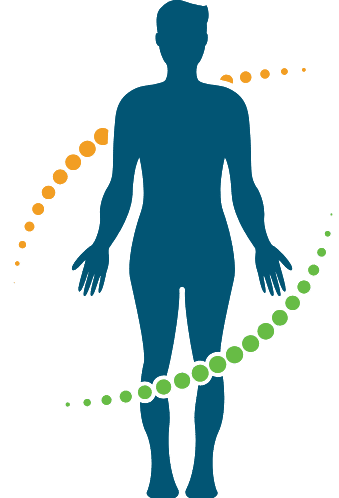
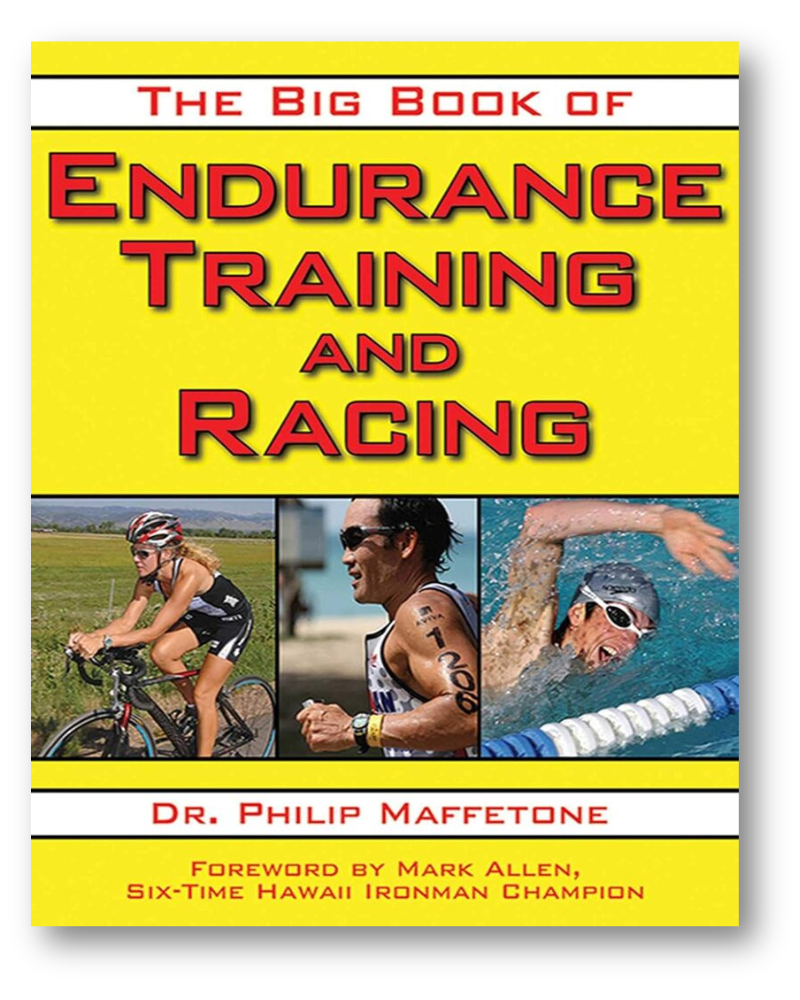
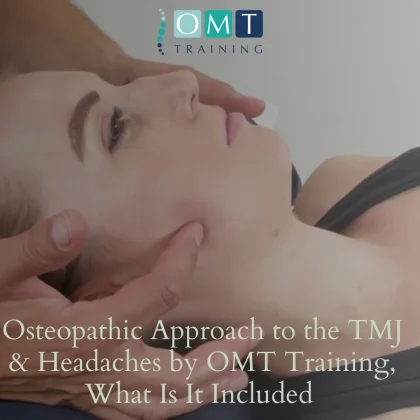
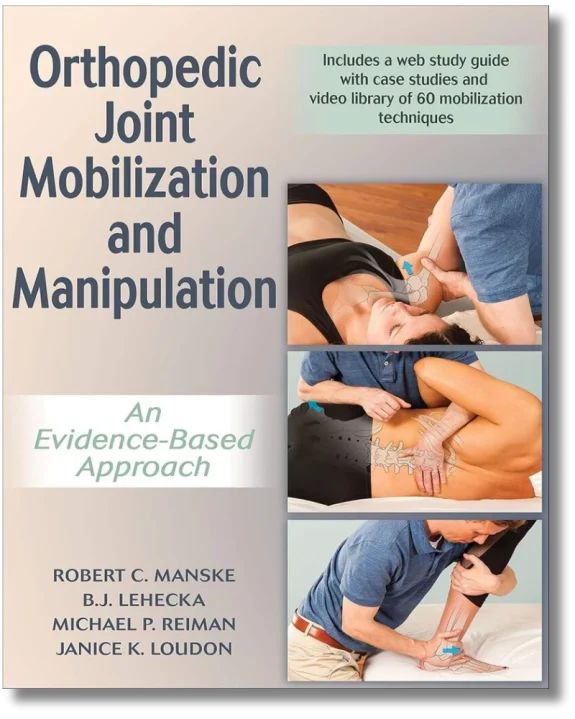
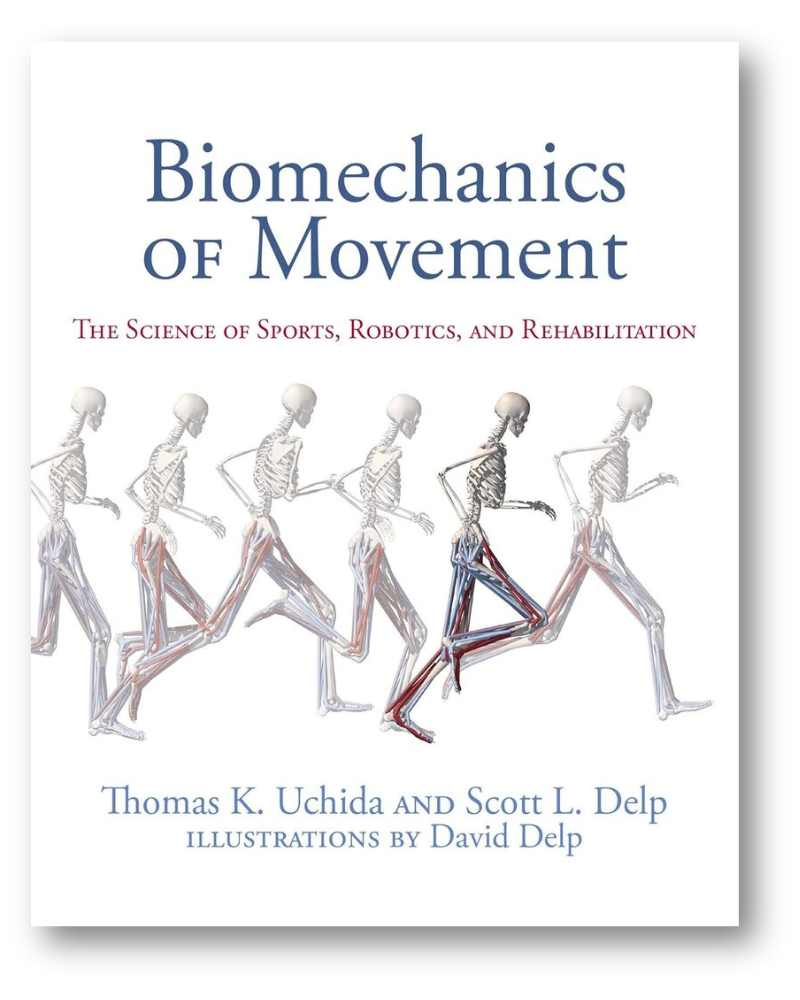
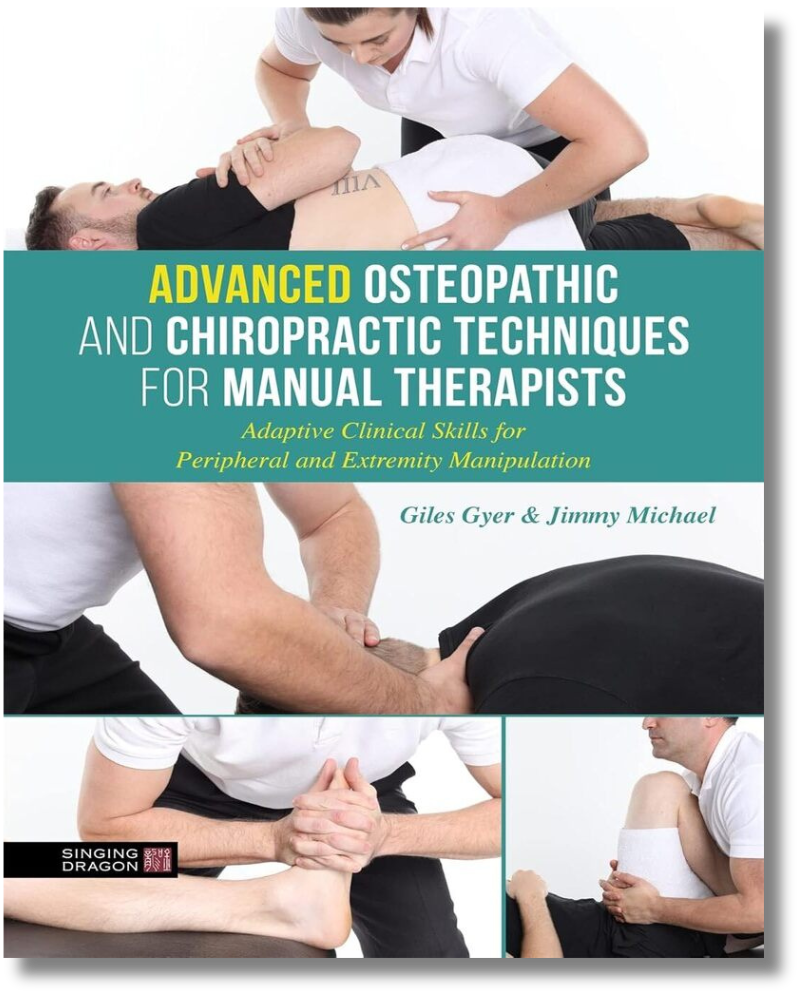
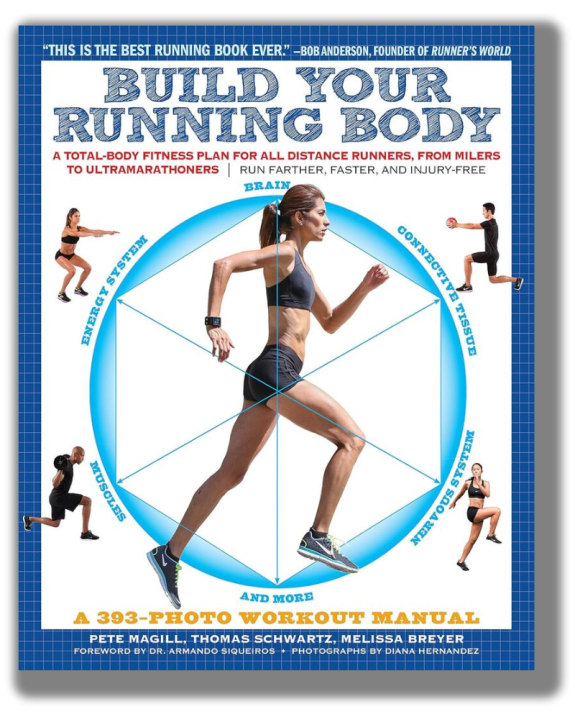
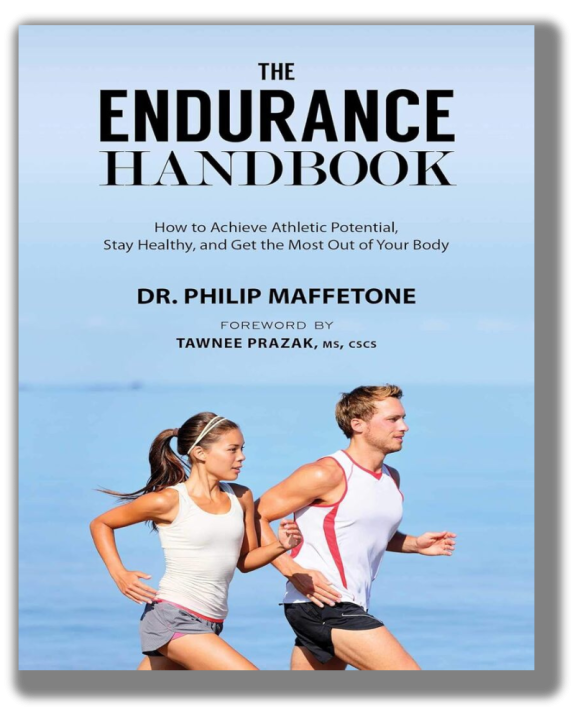
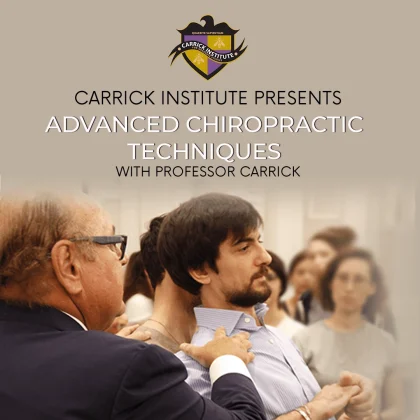
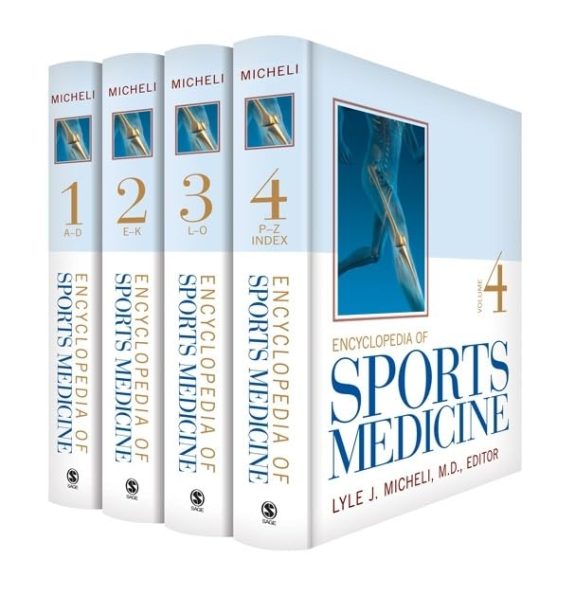
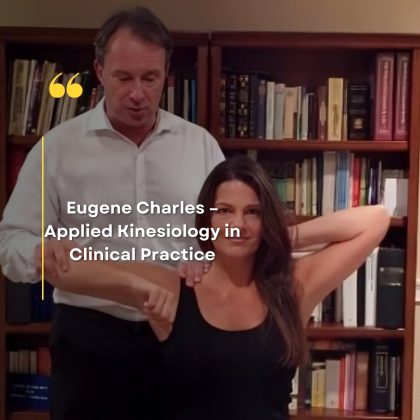
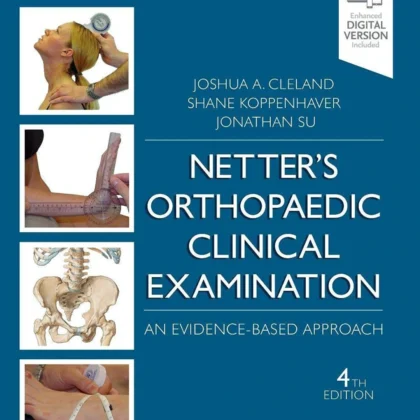
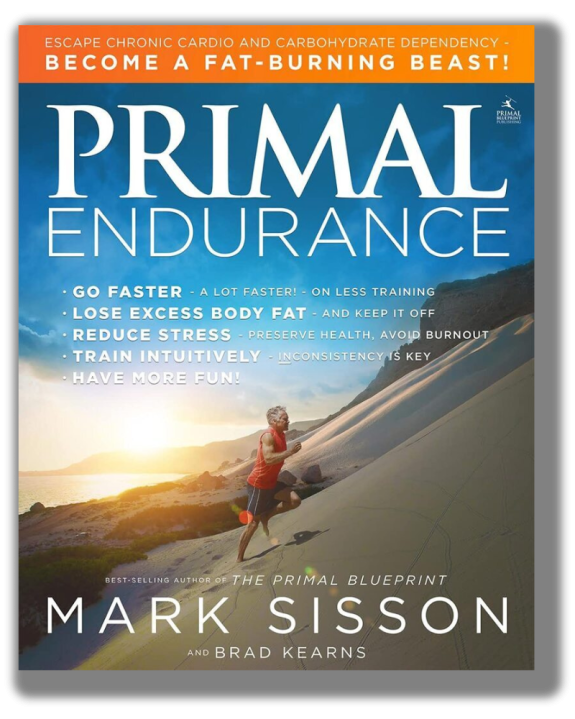
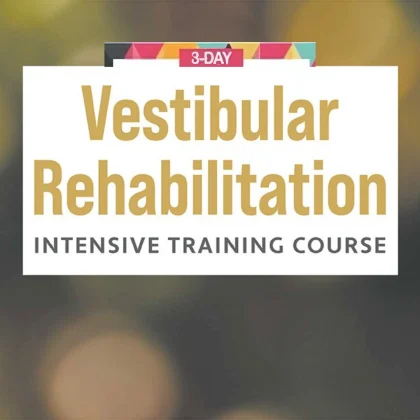
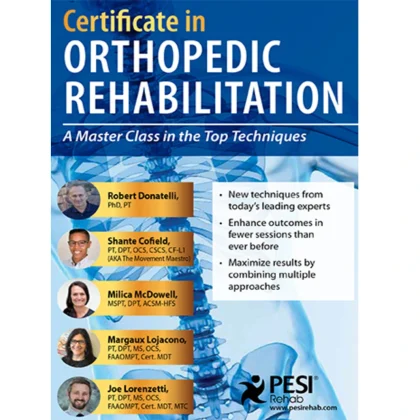
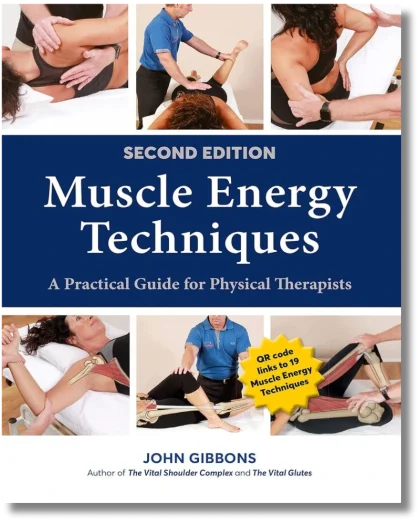
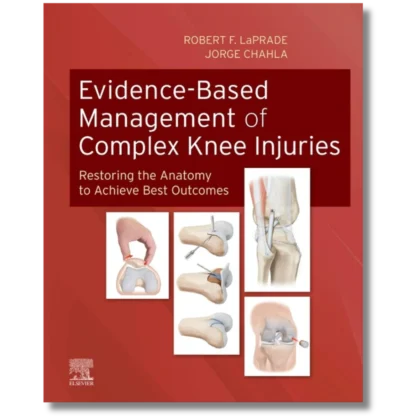
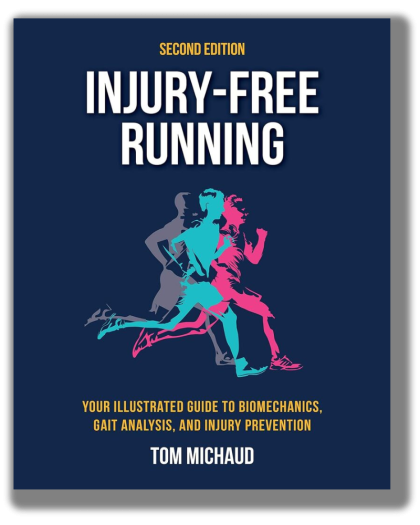
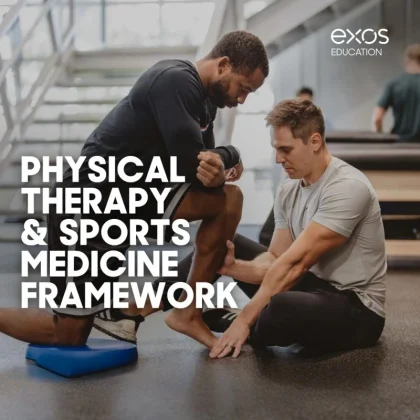
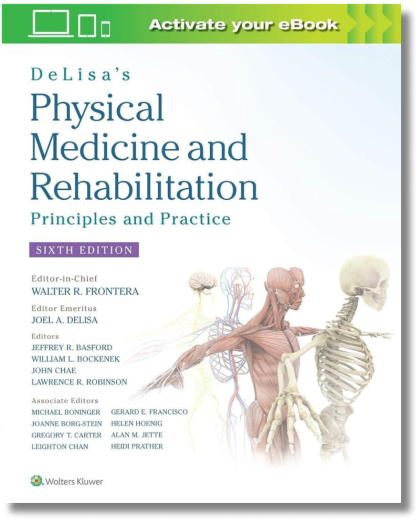
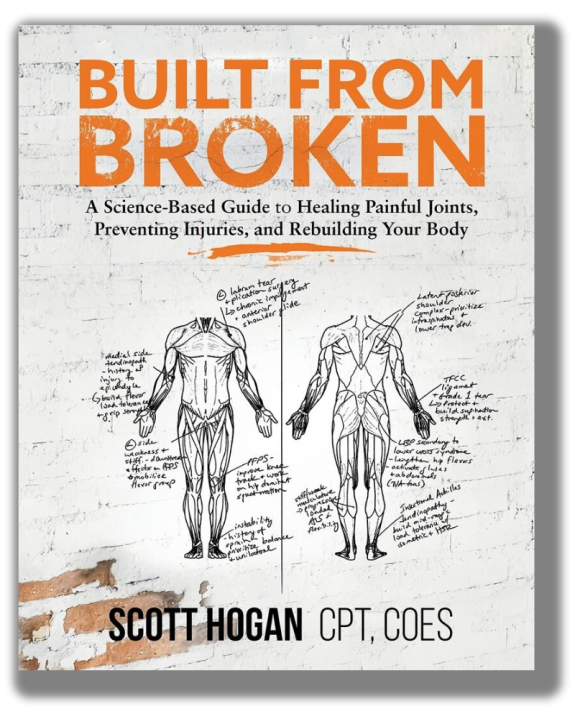
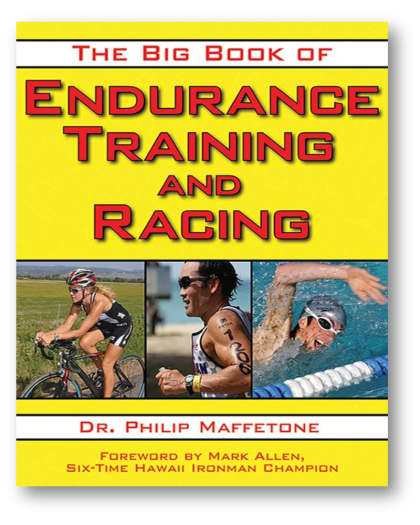
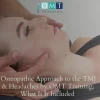
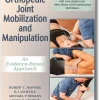
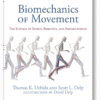
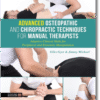
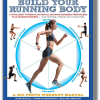
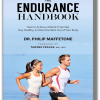
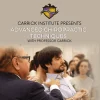
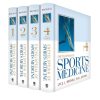

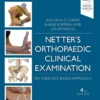
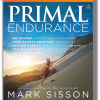
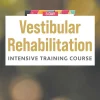
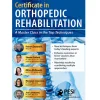
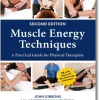
Patrick H. Fox (verified owner) –
I have read most of his books, this is the best, the first half I give 5 stars for the training, the second half on diet etc I give 3 1/2 stars. If you don’t know his ideas – this is a wonderful book to train with – most coaches don’t get this message but it works the best for endurance.
Dr. Mark Cucuzzella (verified owner) –
Phil Maffetone has followed up his highly influential works of over a decade ago with a volume not only validated by basic science and research but more importantly experienced and felt by those willing to use the methods. I am a physician and lifelong distance runner trying now to teach healthy lifelong endurance for patients to help them deal with life…not just athletics. I discovered Phil’s principles after recovering from foot surgeries from overuse running injuries in 2000. Training slower was a tough pill to swallow at first but as soon as I saw the results of aerobic development in how I felt all day there was no turning back to the “no pain, no gain” approach. Now its “No Pain, Thank You.”
With his methods I’ve achieve a sub 2:35 marathon in 4 decades and we’ve even opened a small running and walking store in a small rural community teaching his principles ([…]
We are also trying to transform how the US Air Force approaches fitness and help them achieve success in their annual fitness tests and their demanding jobs. This, of course, involves Maffetone principles.
Mark Cucuzzella MD, Assoc Prof of Family Medicine West Virginia University and Lt Col USAF Reserves
R.M. (verified owner) –
This is a book that can be read and read again and again. there is much learning in it and it sure make running more comfortable to do. It was hard at first to run within the heart rate he wanted us to run in, but after awhile we got faster and it is a great way to run for life and keep your health and no injuries.
Paul Riehemann (verified owner) –
Dr. Maffetone is a pioneer and his methods work. His coaching helped Mark Allen win six Ironman World Championship titles in Hawaii. Dr. Maffetone’s 180 Formula for determining maximum aerobic heart rate (MAHR), coupled with his maximum aerobic function (MAF) test are the foundation for an effective training and racing program. Since I started following his methods, my race times have dropped, injuries are very rare and my overall health has improved.
The information on ‘carbohydrate intolerance’ and Dr. Maffetone’s Two-Week Test are priceless. I’ve completed the Two-Week Test and experienced the benefit of more even energy levels and reduced belly fat. Why do we eat so many refined carbohydrates and so much sugar anyway? Stop it for two weeks (based on the protocol outlined), see how you feel and how much weight you lose, and then decide how you want to eat. Dr. Maffetone also details how eating fewer refined carbs and less sugar will improve your training and racing. But don’t take my word for it – the MAF test (running a set course at MAHR) will provide you with the results.
Results: at age 29 I qualified for the Ironman in Hawaii and completed the race in 10:37. Several years later I started using Dr. Maffetone’s methods and competed in races up to ½ Ironman in length. (This book includes the information from two of Dr. Maffetone’s earlier titles, Training for Endurance and Eating for Endurance.) At age 43 I qualified for Hawaii again and set a goal of beating my previous Hawaii time. I completed the race in 10:19. This would not have happened without Dr. Maffetone’s methods.
I give this book to the triathletes I coach and it is the basis for our work together. The key is that athletes feel and see the results; this is motivating. “The Big Book” truly is THE book for faster race times, reduced body fat and better overall health.
Super Greg (verified owner) –
Phil Maffetone lays out the foundation for a healthy, fit lifestyle with this book. I would recommend anybody who performs any endurance sports at all to read this book, as well as anybody interested in health in general.
The first third of the book is about aerobic training. Specifically, training in a way that causes your body to burn mostly fat during aerobic activity.
The second third of the book is about diet, and this section is something that absolutely everyone should read. There are so many misconceptions out there about diet, specifically the ridiculous “low fat” craze. Phil explains in detail why meats, fat, and veggies are good for you, and why refined carbs are bad. There is a long explanation of different dietary fats and which ones to eat to stay balanced (eating correct amounts of vegetable oils, meat/dairy fats, and fish/flaxseed fats). His recommended diet also promotes fat burning for energy, tying in with the training strategy.
The focus of the training and diet is not to “lose weight”, although if you are overweight and follow this plan you will definitely shed pounds your body doesn’t need. The main purpose is health and performance – aerobic activity is much more efficient while burning fats instead of carbs.
The last third of the book is about injury prevention and care.
Rhune Scott (verified owner) –
If you are interested in heart rate training then you really need to take the long view and commit to the plan. I have been using Maffetone’s Method for about 6 weeks now and I am starting to see some results, but I am still training at a pace much slower than I had been. Even some of the elite athletes featured in the book explain it could be six months with the plan to start seeing results similar to previous training paces, but I will say I definitely find my longer runs are easier at the slower pace, and I am able to handle a larger volume of miles. Too early to tell if it is totally worth it, but since my goals are focused around endurance, and some of Maffetone’s guidelines are elements I have already seen and used in other longer races, I think I am on the right track.
Mark Cramer (verified owner) –
I’m training for my first IronMan and came across this book. In the past, I’ve trained for marathons by running fast and eating anything I wanted (lots of carbs). When I didn’t run, and continued to chow down carbs I slept poorly and felt irritable and gained wait of course. After reading this book, I look at food very differently now, and have moved toward a paleo diet and slow fat-burner runs. I feel great and sleep like a bear. When I see tempting high carbs, I ask myself if it’s worth a bad nights sleep and walk away.
I say it may have changed my life, but I want to go a full year before I know I’m changed.
Scott C. (verified owner) –
This book is great for someone wanting to learn how to train for endurance running without being injured. This book is also great at helping to learn how to eat healthy and how your diet affects your physical fitness. It is difficult to read sometimes due to the length and the detail in the book, but it is full of useful information.
Mike Haydon (verified owner) –
This is one of those books every endurance athlete should read early in their journey. Combining a lot of science with clear explanations, Dr Maffetone sets out pretty much everything you need to know about how endurance works, the importance of diet (and exactly why different things work for different people) and how to be your own coach. It doesn’t cover things like how many runs to do of what length, rather focusing on how hard to run (or cycle or swim) and when & why to mix up your training speeds.
Charles R. Culver (verified owner) –
At age 47, I have been running for many years, but only started running halfs and marathons over the past two years. I increased my mileage from 15 miles per week to 40 without changing my pace, but found myself with nagging injuries. I also saw my race times increasing instead of dropping. I beleive this book has the solutions to my problems. After a few weeks following Dr. Maffetone’s advice on diet and running, I have lost a few pounds, I feel great, my injuries are healed, I don’t feel sleepy in the afternoon and I’m starting to see improvements in my aerobic pace. Thanks, Doc!
Atlantica (verified owner) –
At 60 years of age want to mainly avoid injuries, which now take longer to heal. Maffetone’s book provides good explanation of the benefits of lower heart rate training. Bought an inexpensive basic Polar heart rate monitor a year ago and use it for all my runs. So far, so good.
Louis Raboin (verified owner) –
I learned from this book how to train for distance running. Using a heart rate monitor in combination with Dr Mafetones 180 formula,I trained for 2 years and I ran a qualifying time for the Boston Marathon without the normal high intensity anaerobic running I needed to do in the past. This is a great book for training covering all aspects of nutrition, cross training, injury care and just about all you need to know for endurance training. A great Book.
Kirk VanOoteghem (verified owner) –
This is a great book. I first heard of this book when it was recommended by a medical doctor who gave a presentation on marathon training at a marathon expo I attended. I bought the book and read it cover to cover. I am not an expert in sports medicine or training… but I am an avid marathoner, ultra runner, and triathlete who is also an equally avid consumer of information regarding training and racing. This is the most complete source of information on endurance training that I have yet to see. Don’t buy it expecting to learn some easy secrets to success, etc. It just contains good info – and a lot of it – on virtually everything the endurance athlete needs to know. Solid advice from a reliable source. You won’t regret reading it. It may have more information than you are looking for… but certainly not less.
A.H. (verified owner) –
This book has really improved my running and i’m only half way through it! It doesn’t just talk about sports, it also talks about how your diet affects your running and ways to improve it. It goes into detail about what vitamins to eat and which ones to avoid. It’s a lot of great information about endurance training and I highly recommend it!
A.A. (verified owner) –
This book is (extremely) useful to competitive and amateur athletes, alike. It came highly recommended to me from a friend and he thought it would help me as much as it helped him. At that time, he was a highly competitive Ironman triathlete and I was an overweight, newbie struggling to do a 5K. That just says, this book is not just focussed on pros OR amateurs. It relates to everyone because it focusses on teaching basic principles of fitness and how our body works.
Dr Maffetone touches on many important aspects that are overlooked by 90% of the people (including active/fit people!) such as aerobic vs anaerobic energy, role of carbohydrates, HR as an effective tool, using FAT as a fuel in long races (you heard it right!). Throughout the book, Phil uses examples of how he helped various athletes and non-athletes in improving their personal records and injury prevention just by improving their basics.
The book itself is written in a very simple manner and is an easy read. If you are looking for 10minutes a day/ 3x per week magic workouts/schedules here… prepare to be disappointed. One has to read, digest and apply this information to their workouts and diet. Some of his concepts, might seem unconventional but they work very well. Whether you choose to follow Phil Maffetone’s methodology to train for your next race or not, is upto you. But regardless, it provides a wealth of information for any enthusiast in world of endurance sports.
canalpilot (verified owner) –
I was taken aback when I read all of the symptoms for stage 1 over training! I had nearly all of them! Yikes!! Do not read this book if you want to do irreparable damage to yourself! I have to thank the author for saving me from myself for the low price of a novel!!
LaserNC (verified owner) –
After hearing a lot about Dr. Phil Maffetone and the MAF method, I was a little skeptical at first. With way Dr. Maffetone writes and explains, with his unique background and outside the box approach, it was easy to understand how and why his method of training makes sense. When it comes down to it… it’s very simple. He has the data and case studies to back it up!
Arthur Azevrdo (verified owner) –
Great insights and advices for people willing to start running or improve their performance. Dr. Maffetone presents methods that can help us achieving and overcoming our objectives, while keeping us safe from lesions that so often impact athletes of all levels. In the end of the day, it is all driven by the way we train, compete, eat, etc. Dr. Maffetone given a road map to long lasting health!
Mark Dirga (verified owner) –
Thank You, Dr. Maffetone… You explain things thouroughly and clearly. Your teaching has made a big difference in my training and recovery. I’ve already recommended it to others. This book is, along with “Waterlogged”, by Dr. Tim Noakes and Wheat Belly, by Dr. William Davis, a source of life changing knowledge.
Burns (verified owner) –
An interesting read if you are looking for a more holistic, lifestyle approach to endurance training. It has a lot of tips on health, nutrition and general well being although I think it needs updating to fit modern lifestyles. I would have also have liked to see more information on training. Nevertheless, this is a book I would refer to again and again.
S. Fee (verified owner) –
I found this book to have a lot of necessary information as to why you should eat and train this way. There were a few things I don’t agree with (food) but over all I liked it. I am going to follow his plan and see how it works out.
arlie (verified owner) –
I read the book from beginning to end and decided to put part of it use. The book is somewhat technical and re-emphasizes some of the same points over and over again, but perhaps Dr. Maffetone is trying to drive the point home. It’s also broken down between the concept of working out within your optimal heart rate and nutrition. I started the heart rate portion of the program 2 weeks ago and I have to admit that it was very difficult to “run” at such a slow pace. However, of the past 2 weeks I’ve remained true to the program and I already noticed a difference after 2 weeks. Today I found myself being able to run at a slightly faster pace and I was still staying within my heart rate. I was also able to partially run up hills and I didn’t have to walk the entire hill, like I had to in the beginning of the program. I think if you commit yourself to the concept and stay true, it will pay off. But be prepared to get frustrated for the first few weeks, it just is what it is. The second half of the book discuss a lot of information about proper nutrition, hydration and overall health which I found fascinating. Since there’s a lot to put together I decided to start with the heart rate program first and I’m working on the nutrition aspect as I go along. I do recommend the book and I’m very happy to have found it. In addition, I suffered a back injury along with SI joint dysfunction 6 months ago. When I started reading the book, there was a lot of information about the dangers of overtraining. With my first full marathon looming on the horizon, I took his advice and I cut back my running schedule and I stopped stretching. Low and behold, it worked for me. The marathon was a success and I never ever “hit the wall”. In fact I felt so fabulous I could have kept running.
RC (verified owner) –
Its now time to apply what I have learned in the book. Theory looks and sounds interesting.
Heading to a top personal performance (may be Boston) ? Time will tell !
dr foulk (verified owner) –
No-one knows endurance physiology like Phil Maffetone, and it is great to get all his thinking in one volume. I have most of his books but this one is my favorite. Over the years I have trained for and competed in 51 Ironman Triathlons, and 24 Ultraman triathlons, and have had great success when using his methods, and seen poor results when i stray into other training regimens. I’m giving Phil 5 stars for staying relevant with this book.
Dr. Foulk
Haiko (verified owner) –
A very interesting and holistic approach to being not only fit but more importantly healthy. In the quest to become fitter and faster I have in the past neglected my health but this book has taught me that for best long term rewards remaining healthy is the first priority and with time and patience best performance will be achieved. I look forward to adjusting my lifestyle to incorporate this approach.
Jim (verified owner) –
This book had many interesting facts from a medical perspective. Much more than I expected but that is why it’s called the big book. However, what this book was missing was guidelines or at least advice on nutrition for training and racing, especially at the longer distances like half and full distance Ironman races. It also lacked the guidance for where an athlete, following the aerobic heart rate guidelines should be during races when they leave the aerobic zone and go anaerobic. These are the two most important items that support Dr. Phil’s book and theories. Other than the two things, it was a great book. I am now training in my aerobic zone and eating more eggs.
Donna Kine (verified owner) –
Endurance has never been my forte… My old roommate had this book, and bought a heart rate monitor and watch to keep track of her training. After reading most of the book, I decided to buy a monitor also to use while working out too. I’m a biologist, and enjoyed the technical explanations of how the body reacts to exercise. The book was an easy read, yet full of information. I’m not an endurance racer by any stretch of the imagination, but the methods in this book did help me build my cardio without feeling like my heart was going to burst. The nutrition guide in the book was also helpful without being too preachy.
Robin Drury (verified owner) –
I do not have time to write a very long review, but this has become my triathlon training bible. I used it for my first sprint race and I came in 71 out of 143 people overall. I know this is not that impressive for many experience triathletes, but this was my very first race and I do not have any swimming or biking background and it was many years ago that I did any type of running. My goal for this same race next year is to be in the top 25% and I am pretty sure following this book that goal is attainable.
M. Herrell (verified owner) –
Training with a Heart Rate Monitor is awesome. He uses 180 -your age to determine max HR, and all training should not go over that number. Should it go over u slow down or walk until it drops below. This could be a struggle for all the PT studs, however the table will eventually true and you will have bust your ass to reach that number. For the out of shape folks (me), this could take awhile. But it will be worth it.
Brian Dickert (verified owner) –
I bought and read this 3 years ago. Looking back, I can now see how this book changed my life for the better. Even if you don’t think of yourself as an athlete, the principles in this book will guide you toward a life of robust health and wellness.
Brad Kearns<span class="a-icon a-profile-verified-badge"><span class="a-profile-verified-text"></span></span> (verified owner) –
Today with the great popularity of endurance sports, there are dozens of books on endurance training. Many of them are pretty much worthless, as the tired and dated approach of applying a ‘formula’ to the complex, dynamic and highly individual challenge of endurance training continues to be popular. Dr. Maffetone offers a refreshing alternative based on supporting your health while you pursue fitness. This is something often overlooked by the highly motivated, goal oriented endurance athletes keen on working hard and going fast. If you care about being healthy, leading a balanced life, and honoring your body, this book will change your life. Dr. Maffetone’s approach is incredibly simple, but based on good science and decades of hands-on experience, including his work with some of the greatest endurance athletes of all time, Mike Pigg, Mark Allen, Tim DeBoom and others. I’m not kidding when I say this book is one of a kind. It’s an absolutely must-read for any endurance athlete, but more than that, its principles are really the only way to go if you want to be fit and healthy.
Dave Gilbert (verified owner) –
Maffetone presents a very interesting, engaging discussion on exercise and nutrition. His passion and belief in his system are evident, and he has obviously done a lot of research on the subject and has much real world experience. Whether or not one is willing adopt his principles lock, stock and barrel, whether or not his method will work for every endurance athlete, his perspective is definitely worth the time and money checking out this book.
Austin (verified owner) –
Everybody, from athlete to couch potato, should read this. Very insightful with tons of practical and useful information, put in easy to understand way. It also clears up many misconceptions floating around in the general population. The information from this book has transformed my health and athleticism.
stllwtrs (verified owner) –
This system works… You have to commit to 3 – 6 months depending on age… The older the longer. I have 3 friends it worked for too. You have to be patient and disciplined. You must keep your HR below threshold.
Rhett (verified owner) –
Great book full of interesting science on endurance training and nutrition. As a doctor I enjoy reading scientific information and this is a lot like reading a science book. Not a lot to of fun stories that usually accompany these kinds of books.
Manuel Acosta (verified owner) –
This book is nothing short of life changing. I’ve followed the instructions of Dr. Maffetone for three months and are now seeing results: I’ve lost weight without dieting, my workouts (running, biking and swimming) are much more enjoyable, my aches and pains have disappeared and feel much stronger. I now have a new outlook on nutrition, health and fitness. I recommend this book to anyone.
Kai Griebenow (verified owner) –
When starting running again, my goal basically was to run faster and longer, and I tried that in pretty much every training run. My bones and muscles were hurting and there was not much measurable progress. My coach put me on Maffetone and slowed me down. My injuries are heeling, I have more fun running, and my progress is evident from MAF tests. I just ran my fastest 50 mile race – and I was fine in the finish!
Sidney D. Parker (verified owner) –
Great book for endurance training, however, it falls short when it comes to dietary advice. For example, the following quote comes from the book:
“About 40 percent or more of the carbohydrates you eat is converted to fat and stored as body fat.”
Excess Starch Does Not Turn to Body Fat
A widely held belief is that the sugars in starches are readily converted into fat and then stored unattractively in the abdomen, hips, and buttock. Incorrect! And there is no disagreement about the truth among scientists or their published scientific research. After eating, the complex carbohydrates found in starches, such as rice, are digested into simple sugars in the intestine and then absorbed into the bloodstream where they are transported to trillions of cells in the body in order to provide for energy. Carbohydrates (sugars) consumed in excess of the body’s daily needs can be stored (invisibly) as glycogen in the muscles and liver. The total storage capacity for glycogen is about two pounds. Carbohydrates consumed in excess of our need and beyond our limited storage capacity are not readily stored as body fat. Instead, these excess carbohydrate calories are burned off as heat (a process known as facultative dietary thermogenesis) or used in physical movements not associated with exercise.
The process of turning sugars into fats is known as de novo lipogenesis. Some animals, such as pigs and cows, can efficiently convert the low-energy, inexpensive carbohydrates found in grains and grasses into calorie-dense fats. This metabolic efficiency makes pigs and cows ideal “food animals.” Bees also perform de novo lipogenesis; converting honey (simple carbohydrates) into wax (fats). However, human beings are very inefficient at this process and as a result de novo lipogenesis does not occur under usual living conditions in people. When, during extreme conditions, de novo lipogenesis does occur the metabolic cost is about 30% of the calories consumed—a very wasteful process
Jamie (verified owner) –
This is a good book overall. I am a recreational endurance athlete. I run 10K to marathons and do triathlons mostly half IM. I have been running since I was a kid of 10 years old and I am now 43. Basically this book advocates good nutrition, injury prevention, training smart and building a bigger endurance engine by training slower and easier. I am trying this method over the winter to see if I can make some gains with my aerobic strength in the off season. I have seen some gains within the 2 months I have been using Dr Maffetones method BUT the jury is still out, this may be another case of eat the meat and spit out the bones.
Jared Picune (verified owner) –
I am in awe of this book. There is so much information to take in. If you want to go further and faster and be healthy at the same time, this is the book for your Maffetone lays out exactly how to become and optimal athlete while staying healthy. It’s a must read.
Katie (verified owner) –
Thirty-three years running and always learning…. Dr Maffetone’s “slow down to run faster” guidance is a revelation. It sounds stupid, doesn’t it? How can running slower enable one to run (or bike/swim/hike, etc.) faster? Dr Maffetone explains how and why moving at one’s maximum aerobic heart rate (180 minus current age) gradually increases the body’s aerobic system ability to go faster at that max aerobic rate. This information applies to beginners, masters and elites. He covers nutrition and injuries, especially overtraining. (As I have learned over my years of running, symptoms of overtraining can be subtle and masked by stresses not related to exercise.) Do you want to perform and recover better in your endurance sport? I highly ecommend this book and its guidance.
Candice P. (verified owner) –
I enjoyed reading Maffetone’s philosophy on heart rate training and am currently trying it out. So far I enjoy running with the monitor and ensuring that I am in a fat-burning zone. It will take me awhile to fine tune my zones though.
Ironman DD (verified owner) –
Without doubt Dr Maffetone is THE authority on the subject of endurance training. If Mark Allen listened, then I MUST. If you want to get healthy AND fit, look no further than The Big Book of Endurance Training and Racing.
Pat Henigan (verified owner) –
Interesting coming from a background in a different sport- soccer- with different demands- will work some training ideas into coaching sessions
Bradders (verified owner) –
Phil’s ideas are pretty stimulating. Whether you agree or not, there is plenty of food for thought. Helped me eat much better, I cut out refined carbs and still eat as I want but lost the 10 pounds I needed to lose in a month. Am trying the running at a specific heart beat thing and as people say it is frustrating as you feel so slow. Best thing for me after years of injury is that it forces you to slow down. May even be the solution!
Dragos Roua (verified owner) –
This book is a godsend for any serious ultrarunner. No bs, straight to the point and easy to digest. There’s a lot of info, but I take this as a good thing, I’d rather learn a lot of new, reliable and verified stuff instead of swallowing motivational mumbo jumbo. It completely changed my training and with very good results. Highly recommended.
Just Asking (verified owner) –
I “stumbled” onto the ideas of Dr Maffetone while trying to address several body trends that were getting worse with advancing age. Dr Maffetones eating and exercise methods worked far better than I could have imagined. His books and web space now hold a place in my reference library as my “go to” resource for questions on health. Listen to your body.
IGOR BRAUNE (verified owner) –
If you are feeling fatigued or stressed, this book offers a different view of aerobic x anaerobic training plus brings good insights about how food can play an importan role in this equation. Enjoy!
globalgamble (verified owner) –
This book is a must have bible for all junkies! It’s one of those that you don’t read cover to cover, but rather in chunks. Cannot say enough.. get this as a gift of your ultra exercise junkie friends and loved ones.. they will really appreciate it!
Aki and Laura Lintunen (verified owner) –
Lots of good materials, especially the MAF approach to training. Somewhat repetitive and wandering in the chapters on the body and nutrition. Overall well worth reading. A good resource for going back to.
consumer33 (verified owner) –
I really enjoyed the wisdom that Dr. Phil Maffetone presented in his book on Endurance Training. It is chock full of fact based information relevant to dedicated athletes looking to improve fitness and endurance capabilities. I have encountered several challenges while pursuing numerous athletic endeavors, including street racing, triathlons, and attempting a marathon. The approach presented in Endurance Training provided me with a framework to adjust and modify my training for better recovery and ultimately to better attain my goal. The nutrition information provided a sound argument why nutrition should be considered as seriously as the workouts in the training program. The book contains vast information to help shape an individual program for success.
Wilson Halim (verified owner) –
Dr Phil Maffetone focused on both fitness and health. He looked into holistic approach including training, diet, and rest. You will not find specific technique here but this book is the key to the door of holistic approach to excellent health and fitness.
Douglas Gilliland (verified owner) –
Fantastic book. Covers the MAF heart rate training subject and so much more. If you want to burn the most fat possible while training this is the book for you. Great method for Low Carb dieters as well since the workouts are all fat fueled and minimize carb burning. Transformed my way of training for killing myself anaerobically with Crossfit to much longer less intense workouts that maximize cardio gains.
Stephen Sylwester (verified owner) –
I really enjoyed reading this book, cover to cover. Excellent reference manual as well. For background, age 55, I’ve done 10 sprints and 1 Olympic, and am working toward a Half IM. My goal is to take steps to improve the quality and efficiency of my training for the HIM, and this book helps substantially.
Ralph (verified owner) –
The book has a very original but logic approach. Makes a lot of sense. It is hard to start training at Max Aerobic heart race becuase it seems boring but then one learns to realize how much heart beat varies with stress and sleep, and how it can be trained to do the same speed with less heart effort. Trainig the aerobic muscles to grow and improve is so easy to understand and it is the right approach to grow your hability without overstressing or overtrainig.
EL (verified owner) –
It’s a challenge to write a review for this book, because it is easy to see why others with differing ambitions from me would love this. Namely, endurance athletes. I am not an endurance athlete, so my bias. What I sought here was good advice on properly managing my endurance training as a complement to my strength training. All in all yes, I got that, and so I am very favorable to this book, with a few, admittedly, idiosyncratic qualifications.
There is a fundamental message in this book that is the primary take away: adjust your HR calculation to 180 – age (as opposed to the conventional 220 – age), and train at a HR of within 10 BPM of that. The logic for this is compelling. Above that HR, the body begins to to rely on anaerobic metabolism, which means you’re burning the kindling wood, sugar, rather than the logs, fat. It’s in the slow fat burn that that all the holistic benefits of aerobic training kick in. Going over that intensity into anaerobic metabolism sacrifices these benefits.
As a (too) long time weights and high intensity trainee, I am coming finally to realize how important it is to have a genuine aerobic component to ones regular, long-term training strategy. There are things the aerobic system only can do which the anaerobic system cannot, as it was not designed to. Mainly, this is to enable sustained movement AND train cardiac efficiency. So I will do what Dr Phil says, so down, stay in the “MAF Zone” and develop aerobic strength on a separate track from my anaerobic training (squats, deadlifts, kettle bells, etc).
So what was somewhat taxing in this book? OK….this. First of all, there is a very “look at me!” Undertone to the book. He starts off with an almost-died story, then goes on to tell his dramatic recovery and later acclaim, making sure to throw in how cool he is to even be the Chili Peppers “wellness coach” (reading “Scar Tissue” I wonder how much impact he had…I guess running and heroin could be compatible…?), and then how he and Rick Rubin collaborated, one to learn running and the Doc making music….OK, wow, what a cool guy…awesome. * I guess if you’re from LA this sort of talk is just what people do, your nobody unless you’re somebody there. A trivial annoyance, no more.
What is more disappointing is his seeming total lack of knowledge of strength training. He refers to this several times as “push ups, pull ups, and crunches” and not much else. While he doesn’t condemn these anaerobic activities it’s difficult to see any genuine support for them either. It would have been extremely helpful to know what is his medical opinion of hybrid activities such as barbell complexes, sled pulls, kettlebell high rep work, and even calisthenics. I am not clear what his opinion is of higher intensity work period. Even regarding sprinting & HIIT he doesn’t dismiss its value completely but ambiguously seems to be saying its not all that beneficial. I just find that hard to believe.
So this was a vagueness I didn’t appreciate. Perhaps if I went back and re-read the book I might find his position more explicitly on this, bit the book is extremely long and long winded, you wont really want to read it twice.
So, very useful in its fundamentals of aerobic physiological development systems, but rather overwritten too, and needs some more straightforward commentary on alternate training modes.
chris (verified owner) –
Great book, required reading for anyone serious about training (endurance athlete or not). I’ve been able to take a lot of this information and blend it with strength training for a healthier life.
Heart of Ohio (verified owner) –
I bought this book solely for more details about the author’s low heart-rate training, but found myself reading all of it with interest. He provides easy to understand instruction and rational explanations for his recommendations, most of which I am taking to heart and implementing in my training.
boldgoldman (verified owner) –
After reading this, I am liberated and enlightened. I will be avoiding mainstream medical professionals and taking care of myself using the wisdom of this book. So much knowledge in this I will be rereading it. My endurance has already improved after implementing the MAF method!
Karl Ben (verified owner) –
Book received as described and ahead of time. Bought this book (used) to heighten my understanding of fat burning.
JAMES C CAMERON (verified owner) –
Long time follower of Dr M, I gave this book to my nephew as he prepares for the next Boston marathon. He appreciates the author and his book
Marco (verified owner) –
Thank you!
Wong H. (verified owner) –
You may not agree every part of it but it’s holistic and solid